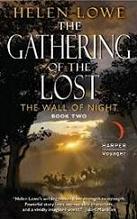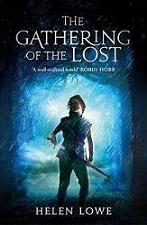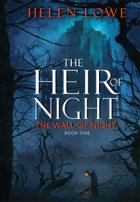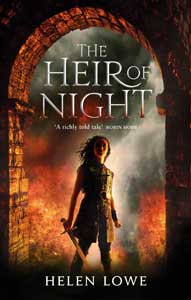What I’m Reading: “The Bloody Chamber” by Angela Carter
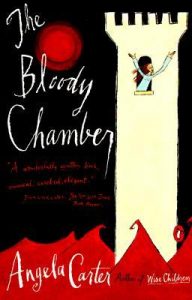 Angela Carter (1940 – 1992) is an SFF name I’ve known for quite some time because although relatively shortlived, she’s an iconic writer from the 1970s and 1980s, credited with reframing speculative fiction through a feminist lens. She also received more awards for her writing than you can shake a stick at.
Angela Carter (1940 – 1992) is an SFF name I’ve known for quite some time because although relatively shortlived, she’s an iconic writer from the 1970s and 1980s, credited with reframing speculative fiction through a feminist lens. She also received more awards for her writing than you can shake a stick at.
Yet although I read some of her 1970s non-fiction while at university, I never quite got around to the fiction, which is why when I stumbled across her collection of short stories titled The Bloody Chamber—on a book table in my local MP’s office of all places; yes indeed, endeavouring to participate in the democratic process, aye!—I snapped it up.
Being a writer, I can no more not read than a fish can not swim, but when hard at work on a novel (as you will all be glad to hear I am right now, despite the visit to my MP’s office 😉 ) short stories are a great way of continuing reading without embarking on the commitment—and temptation toward page-turning nights—that are a risk of novel reading. (Especially SFF ‘doorstop’ novels – just saying!)
All another good reason for snapping up The Bloody Chamber – and dear readers, I have not been disappointed.
The Bloody Chamber is a retelling of traditional folk and fairytales with a particular focus on more contemporary settings—although some I would also describe as ‘timeless’ or ‘time-slippish’—as well as famously empowering the heroines and generally giving the stories a more female-centric slant. For example, in the title story, The Bloody Chamber, which is a retelling of the Bluebeard fairytale, the heroine is rescued by her mother, not her brothers as in the traditional story. (Although I note that the heroine’s sister, Anne, supported her sister in the traditional version so it was not entirely ‘passive heroine alone.’)
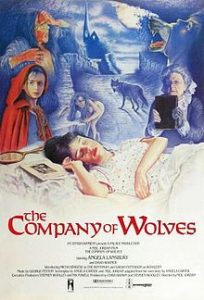 The collection contains ten stories, several of them told two different ways: for example The Courtship of Mr Lyon and The Tiger’s Bride are both retellings of Beauty and the Beast, each with a different slant. Similarly, The Werewolf and The Company of Wolves, offer two different takes on Little Red Riding Hood. The latter was the basis for the 1984 film of the same name.
The collection contains ten stories, several of them told two different ways: for example The Courtship of Mr Lyon and The Tiger’s Bride are both retellings of Beauty and the Beast, each with a different slant. Similarly, The Werewolf and The Company of Wolves, offer two different takes on Little Red Riding Hood. The latter was the basis for the 1984 film of the same name.
In addition to her feminist lens, Carter’s work (in this collection) is decidedly Gothic in tone but stands out most for her amazing use of language. This collection is definitely a Gorgeous Words contender, with opulent, even ornate, imagery and powerful evocative language. The stories and the language also comprise (because no one story is approached in the same way) the bold and the bawdy, the richly sensual and outright sexual, and the bloody and savage.
Completely in keeping with the traditions of fairy and folk tales, you may say, and I believe you are quite right. The point of difference is the contemporary framing and the willingness to look at more than one way of telling the same story.
The one aspect that did not work well for me was that I found the storytelling style distancing. I always felt I was on the outside looking in at the story happening, rather than being drawn into the action and ‘living’ it with the characters. In part this was because of the almost ‘anthropological’ use of the narrative voice, which may have been deliberate because of the fairytale retelling format. But it’s not my preferred style of short story, with the ‘drawing in’ style epitomized for me by Katherine Mansfield’s Miss Brill.
The strengths that carried the stories through, for me, were the power of the language and the equally powerful reslanting of the old stories. Overall, I’ve enjoyed the collection and definitely recommend it to keen speculative fiction and fairytale retelling readers. I believe those who enjoy authors such as Catherynne M. Valente and Seanan Maguire will almost certainly appreciate Angela Carter.

Angela Carter, 1940 – 1992
As for those ten stories, do I have a favourite among them? I did like The Bloody Chamber heroine’s Mum riding to her rescue, which makes a great opening tale. Overall, though, I incline toward Puss-In-Boots, as favourite. This may be surprising to some since it’s probably the most bawdy and definitely the most amoral of the tales. Nonetheless, the retelling fits the story and it has a sardonic, tongue-in-cheek quality that works very well—and of all the stories, Puss’s point of view engaged me most fully.
To learn more about Angela Carter you can start with the British Council, here, or try Wikipedia, here.


